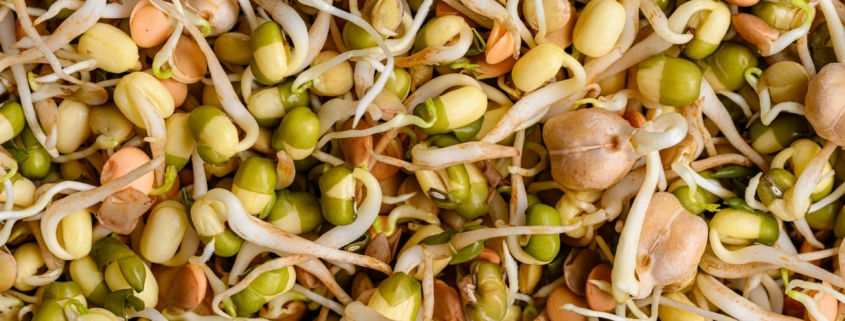Understanding the development of mung bean seeds isn’t just about agriculture; it’s an exploration of science that plays a significant role in food production in Australia. Mung beans have steadily gained popularity due to their versatility and adaptability in various climates and soils. Known for their high nutritional content, they are a staple in many diets. Delving into the science of their development helps farmers and agricultural enthusiasts maximise yield and improve quality.
In the heart of this exploration is the intricate process that transforms a simple seed into a thriving plant. From genetics to best farming practices, each step demonstrates innovation and discovery. Experts in the field are continuously seeking ways to enhance these processes, ensuring that each harvest is as successful as possible. This journey of seed development offers insights into how mung beans can be cultivated more efficiently, ultimately benefiting both the growers and consumers as they become a larger part of Australia’s agriculture.
The Genetic Makeup of Mung Beans
At the core of mung bean development lies their genetic composition. While it may sound technical, understanding a bit about mung bean genetics can lead to meaningful improvements in cultivating these seeds. At the genetic level, mung beans possess traits that determine their growth patterns, resistance to diseases, and overall quality. Farmers can harness this knowledge to select seed varieties that offer the best chance for success, adjusting these selections based on environmental factors.
Exploring and deciphering these genetic traits allows for the development of superior mung bean varieties. These improvements are not just theoretical. On Australian farms, they translate into seeds that are better equipped to withstand local climatic challenges, pests, and diseases, resulting in consistently healthier crops and better harvests.
Mung bean varieties are:
– Naturally resilient, making them suitable for diverse agro-climatic zones
– Packed with nutrients, ensuring they meet dietary needs
– Versatile in applications, from culinary uses to dietary supplements
The dedication to sourcing quality seeds with the right genetic traits ensures that growers can achieve robust crops. By understanding and selecting superior genetic lines, the foundation is set for a thriving mung bean crop, ready to meet the needs of both today’s and tomorrow’s markets.
Stages of Mung Bean Seed Development
Mung bean growth unfolds through distinct phases that take these seeds from germination to a mature, flourishing plant. To achieve successful cultivation, understanding these stages is key. Starting with germination, the seed first absorbs water, triggering the growth process. A small shoot breaks out from the seed, reaching towards the surface. As the shoot develops, the seed’s nutrients fuel its early growth until it can start photosynthesis.
Following germination, the seedling stage begins. During this time, roots take hold in the soil, providing stability and access to more nutrients. Leaves start to form, allowing the plant to efficiently catch sunlight, which is crucial for energy production. Paying attention to spacing, soil quality, and watering practices ensures that the seedlings don’t just survive but thrive into healthy plants.
Here are some best practices to boost each stage:
– Germination
– Use well-draining, nutrient-rich soil.
– Maintain a consistent moisture level.
– Ensure seeds aren’t buried too deep.
– Seedling Growth
– Thin out crowded seedlings to allow space.
– Keep an eye on pests and implement control measures.
Environmental factors like temperature and humidity play a significant role at every step. For instance, cooler temperatures can slow down growth, while too much moisture may hinder seedling emergence. By monitoring these aspects, farmers can tweak their practices to suit their local conditions, paving the way for robust growth.
Advanced Seed Treatments and Technologies
As we explore increasing yields, new technologies and treatments for mung bean seeds mark a notable advancement. Seed treatments have transformed the way seeds are prepared, making them more resistant to environmental stresses and pests. These include the application of chemical protectants that fend off diseases, ensuring seeds remain strong throughout their early life.
Cutting-edge technologies also offer enhancements in seed vigour and purity. By treating seeds with these innovations, the likelihood of successful germination improves, resulting in stronger and more uniform crops. Technologies like coating seeds with beneficial microbes can enhance their growth, making them better capable of nutrient uptake.
These treatments offer benefits such as:
– Increased resistance to soil-borne diseases
– Improved germination rates
– Greater tolerance to weather extremes
Such methods highlight a commitment to more sustainable farming, developing seeds that are suited for modern agricultural challenges.
Looking to the Future of Mung Bean Development
The future of mung bean seed development is set to be quite dynamic. Innovation and research point towards even better-performing seeds, incorporating genetics and technology. Advances focus on enhancing plant resilience, ensuring they can adapt to shifting climate patterns and meet growing demands.
Adopting and promoting these advancements can reshape farming in Australia. By staying ahead of trends, growers find themselves in a prime position to benefit from these technological strides, creating opportunities for more sustainable and productive farming practices.
Investing time in understanding these trends doesn’t only impact current farming efforts. It sets the stage for long-term sustainability, ensuring future generations continue to benefit from innovative agricultural practices that place quality and efficiency at the forefront.
If you want to get more out of your crop and start with the right foundation, exploring the potential of mung beans in Australia can make a real difference. With advanced seed treatments and high-performing varieties, Shepherd Grain helps you grow with confidence and consistency every season.



